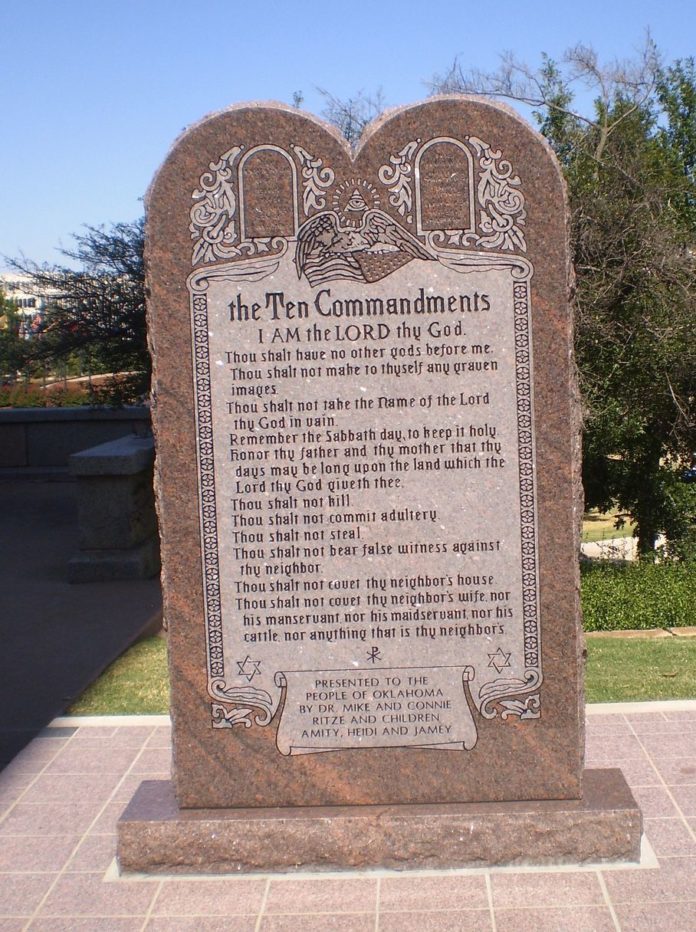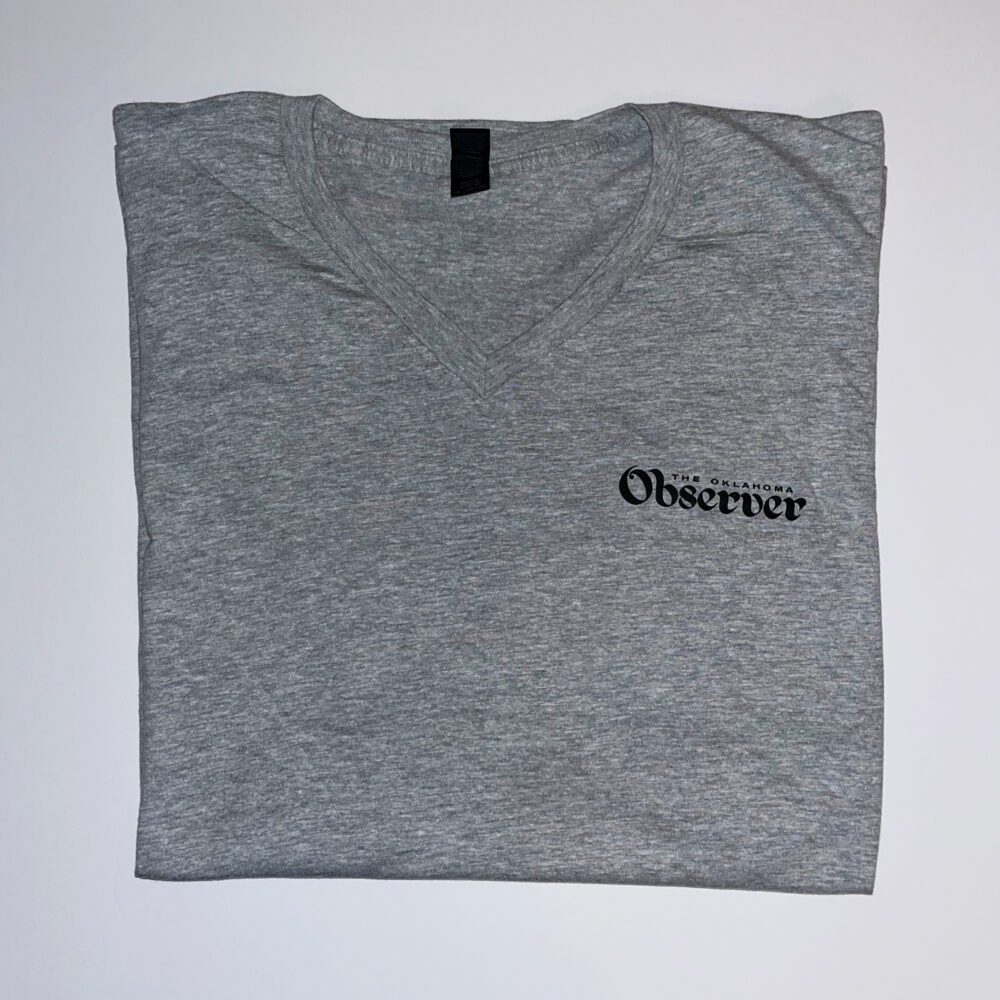BY JAMES NIMMO
Oklahoma County Judge Thomas Prince yesterday fulfilled the mandate of the June 30 Oklahoma Supreme Court ruling that the Ten Commandments monument on the state Capitol grounds must be removed as its placement violates the Oklahoma Constitution’s Article 2, section 5 prohibition of any state money or property being used to promote religion. The Supreme Court’s ruling was 7-2 and it ordered the lower court to affect the monument’s removal.
This case was brought by the ACLU of Oklahoma on behalf of Dr. Bruce Prescott, James Huff, Cheryl Franklin, and Donald Chabot, all citizens of Oklahoma.
The Oklahoma attorney general, Scott Pruitt, never wanting to miss an opportunity for grandstanding, petitioned for a re-hearing but that was denied by Judge Prince as Pruitt was unable to offer anything substantive to the petition.
Pruitt’s initial defense was that the monument was not religious but was instead a historical artifact that was inclusive of Oklahoma’s heritage.
Upon losing both the initial case and the re-hearing petition, Pruitt’s staff came up with a second attempt at re-litigating the entire case by claiming that by denying the monument a place on public property the court’s ruling was making a hostile environment for a now religious monument.
What happened to the non-religious notion of a Ten Commandments monument Pruitt had previously used to no avail? It was replaced by a second argument that was the opposite of the first, because it’s obvious to even children that if one’s first plea is disregarded, then one tries the opposite position.
Pruitt was using a new legal tactic I call tantrum ergo.
The gist of Pruitt’s second strategy was that the Oklahoma Constitution was in conflict with the First Amendment of the Bill of Rights: by keeping a separation of religion and government the court is creating hostility towards religion. This angle was not presented in the initial pleading before the Oklahoma County Court where Judge Prince ruled that the monument was acceptable under Oklahoma’s Constitution as he found it to be a historical artifact and not a religious promotion.
Pruitt’s team wanted to reopen the case entirely knowing that when one loses the first time and can’t change the rules, then one moves the goal posts.
But still, evidently to wring the last dollar from the taxpayers’ purse, Pruitt’s team asked Judge Prince if covering the monument with a tarp or a box would be acceptable because the Oklahoma Legislature might be considering a bill that would remove Article 2, section 5 from the Constitution and should it pass, the monument might be allowed back on public property.
Again, Pruitt’s team wanted the state district court judge to second-guess the Supreme Court and re-interpret the June ruling.
Brady Henderson, legal director of the ACLU of Oklahoma, pointed out the extremely weak position that the Pruitt team was using – the language of Article 2, section 5 is clear and unequivocal as is the ruling from the state Supreme Court and putting forth hypothetical plans about any future unknowable actions of the Legislature is not good jurisprudence.
Judge Prince outlined the foundational duty of the lower court to respect the Supreme Court mandate and the monument must be removed in a reasonable time. After discussion with both sides, it was agreed the monument will be removed by Monday, Oct. 12 from the grounds of the Capitol with a report prepared by the AG’s office submitted within 10 days following the removal.
The remarks above are entirely my own gathered from my presence in the courtroom, my notes, and listening to participants directly involved in the case. Any errors in fact or characterization are mine alone and should not be construed as coming from my association with any people or organizations connected with this monumental case.
– James Nimmo lives in Oklahoma City and is a frequent contributor to The Oklahoma Observer








